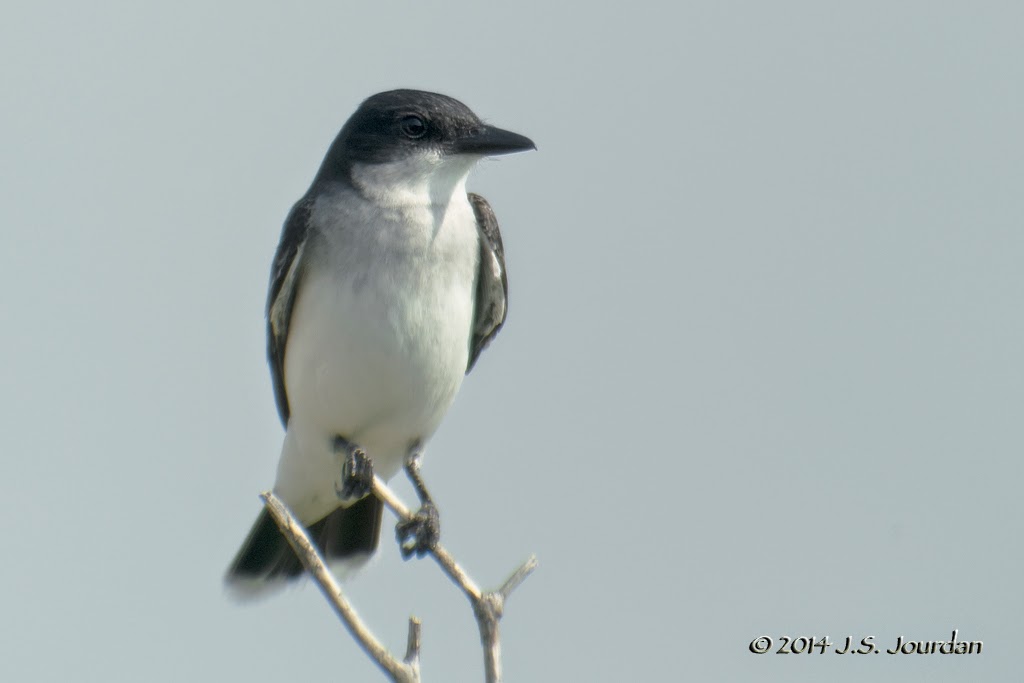Field Test: Sony DSC-RX100 III - 28 Jun 2014
I took the Sony Cybershot DSC-RX100 III to Pt. Mouillee SGA this morning to give it the first real field test. My impressions are based on its use with the Zeiss 85T*FL Diascope with 20-75X Zoom Eyepiece and Digidapter™digiscoping adapter. Most images were taken with the scope at 20X and distances that exceeded 30' (most cases 40 - 150'). Skies were generally clear, but humidity was high with little to no wind.
Overall I was not thrilled with the results of this outing. My first two dozen images of a Song Sparrow 50' away in early morning light were all throwaways. Of the approximately 1000 images I was able to capture with 1.5 batteries (all shot RAW using Speed-Priority Continuous) I had less than 10% keeper rate. A fully-charged battery lasted about 3 hours, but I got about 800 photos despite a rating of only 320 images per charge.
With the 24-70mm lens on the 20X eyepiece vignetting was present until about 50mm. As I mentioned in the previous post the 20-75X eyepiece has issues with color cast (yellow) that is the result of chromatic aberration (CA) that is present mainly along the outside edges of the eyepiece but presented itself greatly in all of the images. The longer the distance the worse the problem got. Generally images came out w/ a greenish tinge (blue sensor + yellow cast = green?). If focusing was not spot-on, the birds had a yellow edge on one side and a blue edge on the other. This was really evident w/ the majority of avocet and grebe photos.
I was shooting ISO 100 and Aperture-Priority, so that didn't help, either. Auto-ISO would've gotten me faster shutter speeds, but I was interested in image quality, not quantity. Using the DMF 'focus-peaking' helped (I think) in most cases, but I still ended up w/ a lot of out-of-focus images. I will need to compare image captures using the Autofocus mode versus manually adjusting (w/o DMF) or fine-focusing using the EVF versus using a Hoodman Loupe on the LCD display.
When I was able to get close to my subjects (American Avocet, Savannah Sparrows, dragonflies) I was generally happy w/ the images. Long-distant shots of the Black-bellied Plover, Wilson's Phalarope were generally more degraded in terms of image quality. If I zoomed the eyepiece I could get a few better-quality images. When I did get keeper images, I was impressed with the noise quality - very little noise reduction was required. Exposures generally required little adjusting, but I had to generally add red channel, reduce blue channel, increase tint, desaturate yellow and desaturate blue or cyan in order to recover images.
All of this I'm going to blame more on the eyepiece and shooting conditions than the camera at this point. The reason I say this is that the camera performed wonderfully on the 40X W Zeiss Eyepiece, which has NO issues with CA and is optically excellent. I spent this afternoon shooting my friend and model Beaker (of Muppet fame) and found resolution, color and exposures impressively captured, with edge-to-edge sharpness and no evidence of CA when shot at distances of 20-30'. I plan to post a comparison of images taken this evening, using controlled lighting, using the Sony RX100 III vs. Nikon V1 vs. Nikon V3 cameras.
Overall I was not thrilled with the results of this outing. My first two dozen images of a Song Sparrow 50' away in early morning light were all throwaways. Of the approximately 1000 images I was able to capture with 1.5 batteries (all shot RAW using Speed-Priority Continuous) I had less than 10% keeper rate. A fully-charged battery lasted about 3 hours, but I got about 800 photos despite a rating of only 320 images per charge.
With the 24-70mm lens on the 20X eyepiece vignetting was present until about 50mm. As I mentioned in the previous post the 20-75X eyepiece has issues with color cast (yellow) that is the result of chromatic aberration (CA) that is present mainly along the outside edges of the eyepiece but presented itself greatly in all of the images. The longer the distance the worse the problem got. Generally images came out w/ a greenish tinge (blue sensor + yellow cast = green?). If focusing was not spot-on, the birds had a yellow edge on one side and a blue edge on the other. This was really evident w/ the majority of avocet and grebe photos.
When I was able to get close to my subjects (American Avocet, Savannah Sparrows, dragonflies) I was generally happy w/ the images. Long-distant shots of the Black-bellied Plover, Wilson's Phalarope were generally more degraded in terms of image quality. If I zoomed the eyepiece I could get a few better-quality images. When I did get keeper images, I was impressed with the noise quality - very little noise reduction was required. Exposures generally required little adjusting, but I had to generally add red channel, reduce blue channel, increase tint, desaturate yellow and desaturate blue or cyan in order to recover images.
All of this I'm going to blame more on the eyepiece and shooting conditions than the camera at this point. The reason I say this is that the camera performed wonderfully on the 40X W Zeiss Eyepiece, which has NO issues with CA and is optically excellent. I spent this afternoon shooting my friend and model Beaker (of Muppet fame) and found resolution, color and exposures impressively captured, with edge-to-edge sharpness and no evidence of CA when shot at distances of 20-30'. I plan to post a comparison of images taken this evening, using controlled lighting, using the Sony RX100 III vs. Nikon V1 vs. Nikon V3 cameras.



























Comments